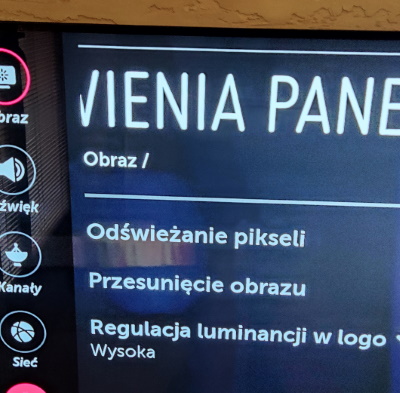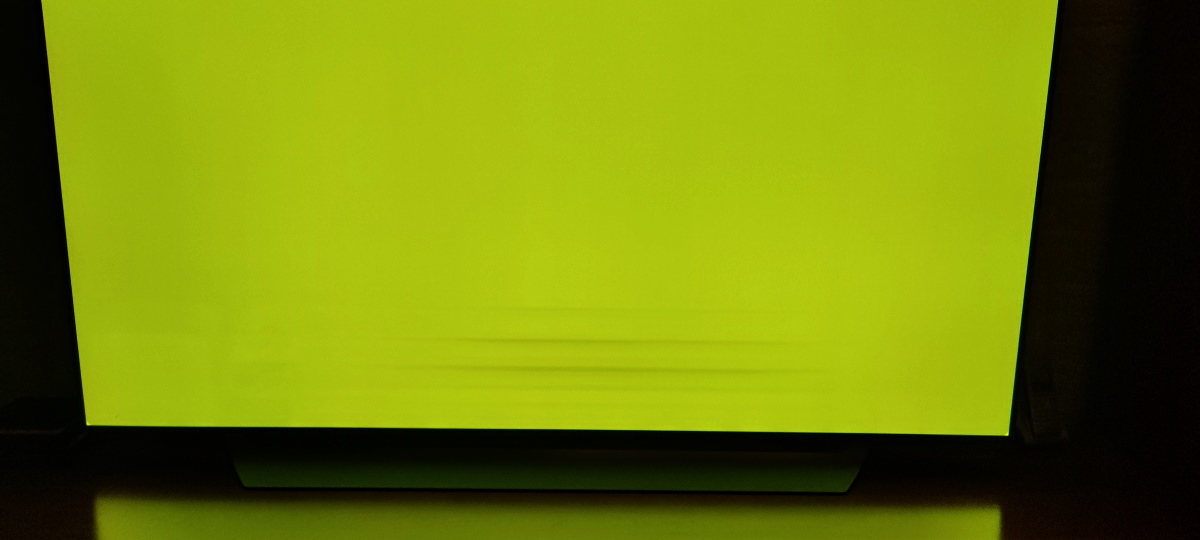

Why I won't buy LG TV with OLED screen
Dodano: 25.05.2022
From time to time we hear about some shortcomings of OLED screens. It is about the possibility of the so-called image retention, i.e. permanent burn-in of the screen matrix. In fact, they do not raise any concerns among potential TV acquisitions due to the high reputation of the brands under which these devices are sold. Following this line of thinking, I myself became a user of such an LG OLED 65C7V TV. I bought it for several thousand zlotys in December 2017. Imagine my surprise when after just a few months (in April 2018) I weighed the clear horizontal stripes at the bottom of the screen. The TV set was under warranty, so it was reported to the manufacturer's service. Along with the report, a photo of the damaged screen was sent, presented below.
Damaged LG OLED 65C7V TV
** click on the picture to enlarge it
After several visits of specialists, it was found that the burnout of the ekrau was permanent. As part of the warranty, in April 2018, the TV was replaced with the newer LG OLED 65C8 PLA model. This model, unlike its predecessor, has more functions to prevent screen burn-in. In addition to "Pixel Refresh" and "Image Shift" there is a new function "Logo Luminance Adjustment".
Overall, LG's OLED TVs now have three features to help reduce the risk of burn-in. The first feature is "Pixel Refresher" which tries to remove image retention when the TV has been turned on for a long time. This function is activated automatically when the TV is turned off after four hours of continuous use. Pixel refresh takes at least one hour and only starts when the TV is turned off. This feature works either automatically or on demand. The second functionality is called "Screen Shift" and it causes the screen to be moved slightly (imperceptibly to our eye) at regular intervals. This is to prevent image retention in scenes that are stationary for a long time. The newest "Logo Luminance Adjustment" feature detects static logos and dims them to prevent persistence on the screen.

Despite all the above-mentioned safeguards, my new LG OLED 65C8 TV "burned out" after three years of use. Throughout this period of use, the "Logo luminance adjustment" was set as high, although it caused some discomfort related to a significant reduction in luminance in fixed (unchanged over a longer period of time) image elements.
Currently, the burnt out screen of the LG OLED 65C8 PLA TV looks like the attached photo below.
** click on the picture to enlarge it
Unfortunately, viewing images and movies on such a screen causes considerable discomfort. A sensitve user is practically forced to buy the next TV model.
Summary
As it turns out, the new models of LG OLED TVs have many mechanisms to reduce the risk of the so-called image retention (permanent burnout of the screen matrix). Manufacturers boast about these functionalities, which gives the impression to a potential buyer that the problem with screen burn-in has been solved. Meanwhile, reality in many cases shows something else.
I find it unacceptable a situation in which a TV set bought for several thousand zlotys works properly for 2-3 years. It is also unacceptable that the producers' position that the cause of burn-in lies with the user and that it is watching TV programs with a lot of static image elements. It is true that the customer is informed in the TV manual that static images displayed in the same place many times or for a long time may lead to the mentioned retention, i.e. burnout of the OLED matrix. Manufacturers often claim that the information in the TV's instruction manual has not been adhered to here.
From the point of view of Consumer Rights, I believe that the user is not able to determine for himself whether a given image may be dangerous for his TV set and is also not able to determine how long he can watch a "dangerous" program or TV station. Therefore, from a legal point of view, he cannot be blamed for the misuse of the television set. In addition, the TV manufacturer cannot require the user not to watch certain programs or TV stations for too long. It's as if the smartphone manufacturer has banned too long conversations because they can drain and damage the battery.
Autor: Krzysztof Nieścioruk
Źródło: own case
2021-11-25 01:10 So, as you can see, the security mechanisms used against screen burn-in do not always work. Can't you think of more effective ways .. |











.jpg)




